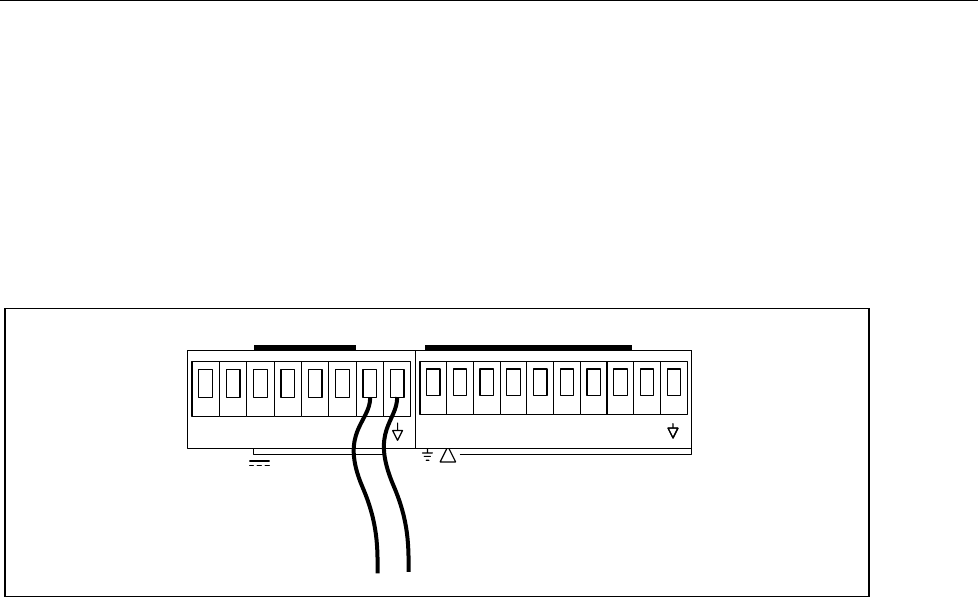
Maintenance
Calibration
6
6-21
External Trigger Input Test
The External Trigger Input Test verifies that the rear panel trigger input of Hydra Series
II is functioning properly.
1. Switch OFF power to the instrument and disconnect all high voltage inputs.
2. Remove the Alarm Output eight terminal connector module from the rear of Hydra
Series II and all external connections to it. Connect short wires (to be used as test
leads) to the ground (J) and TR terminals. Leave other ends of wires unconnected at
this time. Reinstall the connector. Refer to Figure 6-5.
+–0123TR
01234567
Σ
9-16 V
DC PWR
!
+30V
ALARM OUTPUTS DIGITAL I/O
+–
0123TR
01234567
Σ
oo22f.eps
Figure 6-5. External Trigger Test
3. Switch power ON.
4. On Hydra Series II, select the VDC function, 30V range for channels 0 through 5.
Select a scan interval of 30 seconds.
5. Select trigger ON to enable the external trigger input. Press the SHIFT and
MON(TRIGS) buttons (the display shows TRIG), then press either the up or down
arrow buttons to display ON. Press ENTER.
6. Press Hydra Series II’s SCAN button. Hydra Series II should scan channels 0
through 5 once every 30 seconds.
7. During the interval when scanning is not occurring, connect (short) the test leads of
the TR and ground Alarm Output terminals.
Ensure the connection causes a single scan to occur.
8. Disconnect (open) the TR and ground connection.
Ensure the scan continues to execute at its specified interval.
Calibration
Note
Refer to the Fluke Hydra Series II Service Manual (P/N 688868) for
calibration procedures. The instrument must be stabilized in an
environment with ambient temperature of 22 to 24ºC and relative humidity
of less than 70% and have been turned on for at least 1/2 hour prior to
calibration.
The instrument features closed-case calibration controlled over the Computer Interface.
Using known reference sources, closed-case calibration has many advantages. There are
